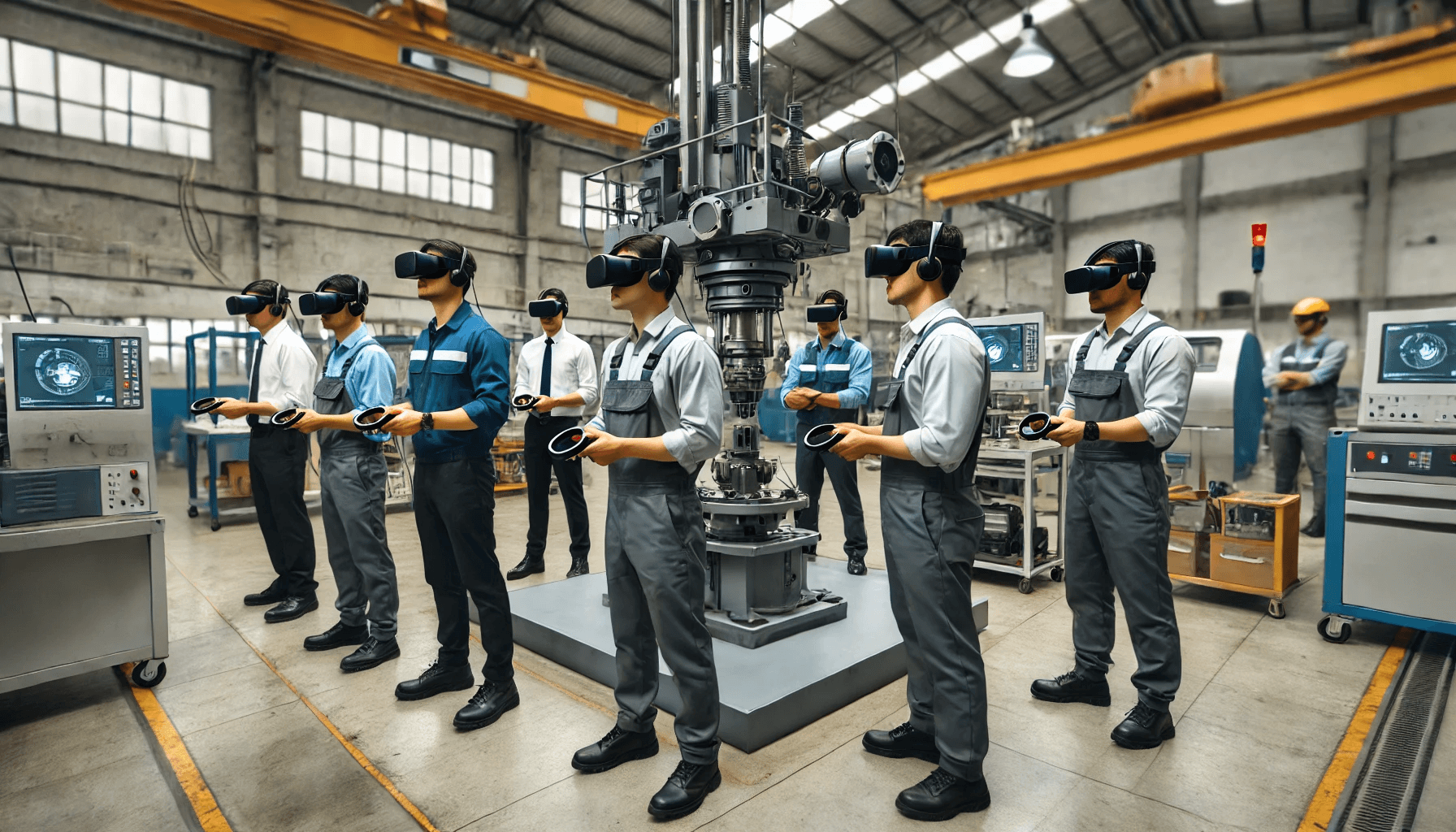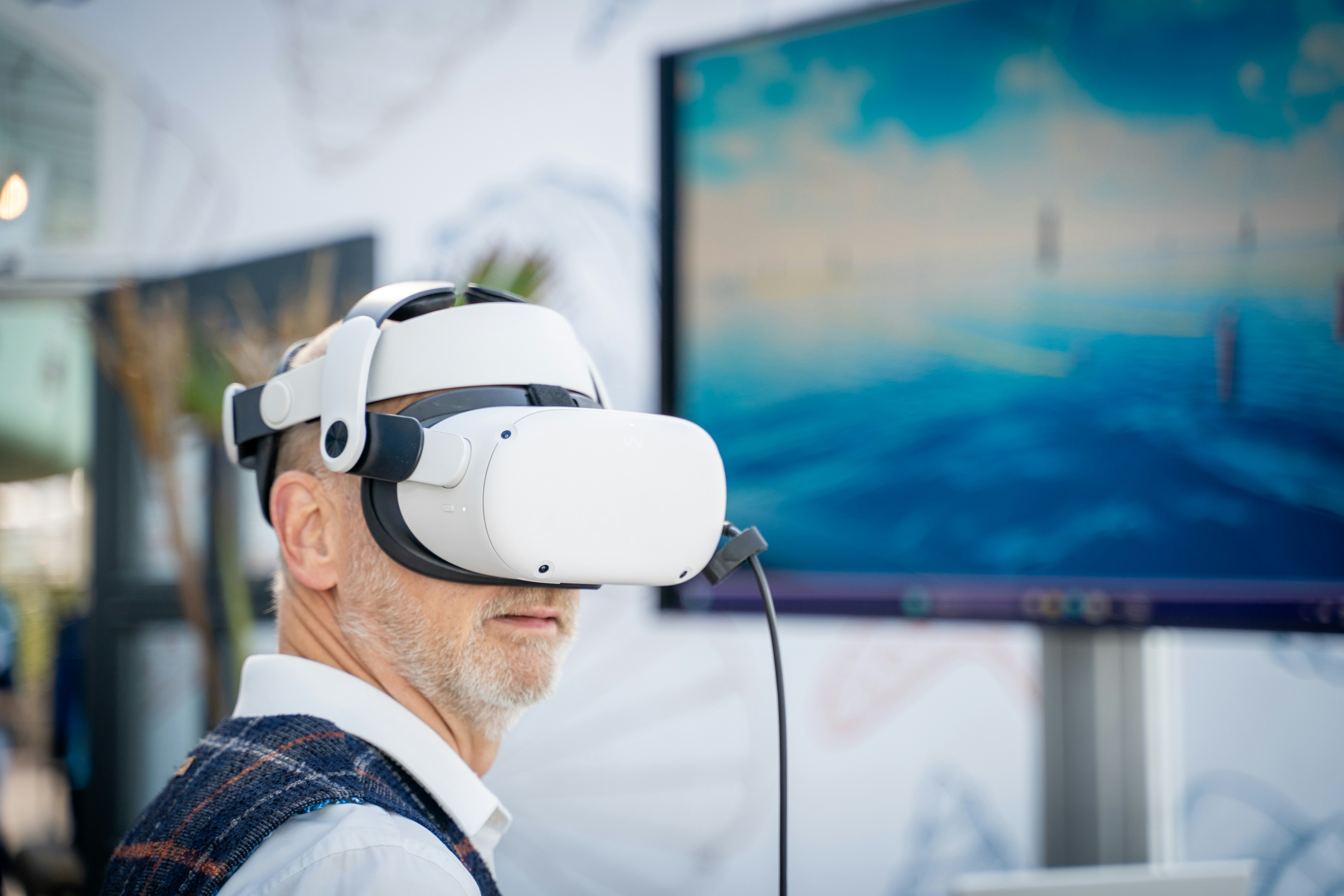Virtual reality has stormed the workplace.
Because it offers dynamic, immersive training solutions. Solutions that your traditional methods just can't match.
But, diving straight into VR on a large scale can lead you to more problems than solutions.
This is where a VR pilot comes in.
Think of a VR pilot as a test drive—an opportunity to demonstrate VR’s potential impact before you scale it up.
It’s not a mere technical test either. Instead, think of it as a strategic exercise - one that lets you understand how VR fits into your training ecosystem.
This guide will walk you through each step of planning and executing a VR training pilot.
1. Analyze Your Workforce: Are They Ready for VR?
Before you even think about buying headsets and developing VR experiences, ask yourself this:
Is my workforce ready to embrace VR as a training tool?
Because the truth is, VR isn’t a natural fit for everyone. For some, it can feel quite intimidating. Meanwhile, others might feel right at home.
Considering all these factors, here’s how you can gauge readiness:
Assess Tech Familiarity: Find out how comfortable your employees are with technology in general (it doesn’t necessarily have to be immersive tech like AR and VR.) Surveys and informal discussions are your best allies for this purpose.
Identify Training Goals: First, focus on roles or departments where immersive learning will have the most impact. Some roles you can consider include hands-on tasks in manufacturing or customer-facing roles in sales.
Gauge Openness to Change: The fact is, some teams adapt quickly to new ways of working. Others, less so. So before you implement VR full-scale, learn if your workforce is likely to be receptive to VR in the first place.
2. Pick a Purpose-Driven Use Case: Select a High-Impact Module
Your pilot's success hinges on the specific use case you select. Select wrong, and you’re likely to blow up your one chance.
So, rather than focusing on VR for VR’s sake, ask: What problem am I solving?
You can also consider a few additional pointers to select the right use case:
Identify the Pain Points: In what areas are your current training methods lacking? VR can especially help bridge gaps in hands-on training or high-stakes scenarios. Like, safety training, equipment handling, or customer service simulation.
Impact vs. Investment: You should choose a module that has a measurable impact. For instance, if you’re a healthcare organization, you might want to use VR to simulate surgical procedures—training that’s hard to replicate in a classroom.
Long-Term Value: A well-chosen use case will justify your investment in it. And once your pilot proves successful it will open up avenues for you for expansion. So, avoid one-off scenarios or temporary solutions. Instead, you should choose a module that has long-term potential.
3. Select Long-Standing Technology
VR technology is evolving rapidly. New hardware and software options emerge almost daily.
In such a rapidly changing environment, how do you future-proof your pilot? Here are some methods you can use:
Hardware Longevity: Choose widely supported headsets like the Meta Quest 3 or HTC Vive. These come with robust support ecosystems and frequent software updates. So, your initial investment remains functional and effective long-term.
Stay Abreast of Developments: Subscribe to industry updates, attend conferences, and network with VR experts to keep pace with advancements. Because long-term tech can only carry you so far; your adaptability will be key.
4. Change Management: Top-Down, Bottom-Up Approach
Implementing VR training isn’t just about equipping people with headsets. It’s also about fostering a cultural shift.
Both leadership buy-in and grassroots support are essential.
Leadership Buy-In: Executives set the tone. If they endorse VR, it encourages middle management to support the initiative. So, demonstrate VR to executives by letting them experience it firsthand. Because VR is one of those things that simply cannot be fully understood until experienced.
Grassroots Support: Get early adopters—those excited by the prospect of VR training—to champion the program within their teams. These people act as invaluable advocates. They can ease resistance and generate enthusiasm among their peers.
Continuous Communication: Keep stakeholders informed and engaged throughout the process. Transparent communication ensures everyone from the top down to the end-users understands the “why” behind VR training.
6. Develop and Test: Quality Is Non-Negotiable
A pilot is a taste of the future potential of VR in your organization. So, quality matters.
And VR’s effectiveness relies on immersion. Anything less, and the experience could be dismissed as a novelty.
High-Quality Content: Create well-designed, visually appealing VR content. One that’s true to life without triggering the “uncanny valley” effect. So, aim for clarity over ultra-realism.
Thorough Testing: Test across various user levels and in different conditions. Testing will reveal where you can make improvements. So, you can make the experience universally accessible.
Stakeholder Involvement: You can bring C-suite executives, managers, and potential users into the testing phase. Their feedback will highlight areas for improvement. In addition, it also helps build a coalition of support around the pilot’s success.
7. Preparation: Arm Yourself with Knowledge
For most people, VR is a complex and unfamiliar technology
So, you need to be ready to educate, answer questions, and address potential scepticism.
Research and Learn: Familiarize yourself with VR. Not just as a tool but also its role in training. Look into its advantages and limitations. The more knowledge you have, the more credibility you’ll have with your decision-makers.
Anticipate Questions: You will be asked everything from “Why VR?” to “What ROI can we expect?” Prepare answers to the most common questions. Know the data points that back up your claims.
Communicate Value, Not Features: Don’t overwhelm stakeholders with technical specs. Instead, focus on how VR’s immersive qualities will benefit employees and ultimately impact the bottom line.
Conclusion: Play the Long Game
A successful VR pilot requires time, commitment, and a long-term vision.
Because at the end of the day, the aim is to create something that lasts. Something that has an impact long after the initial effects and thrill have worn off.
So, start small and aim high. But remember—you’re not just introducing VR. You’re pioneering a new era of training that could redefine learning across your organization.



